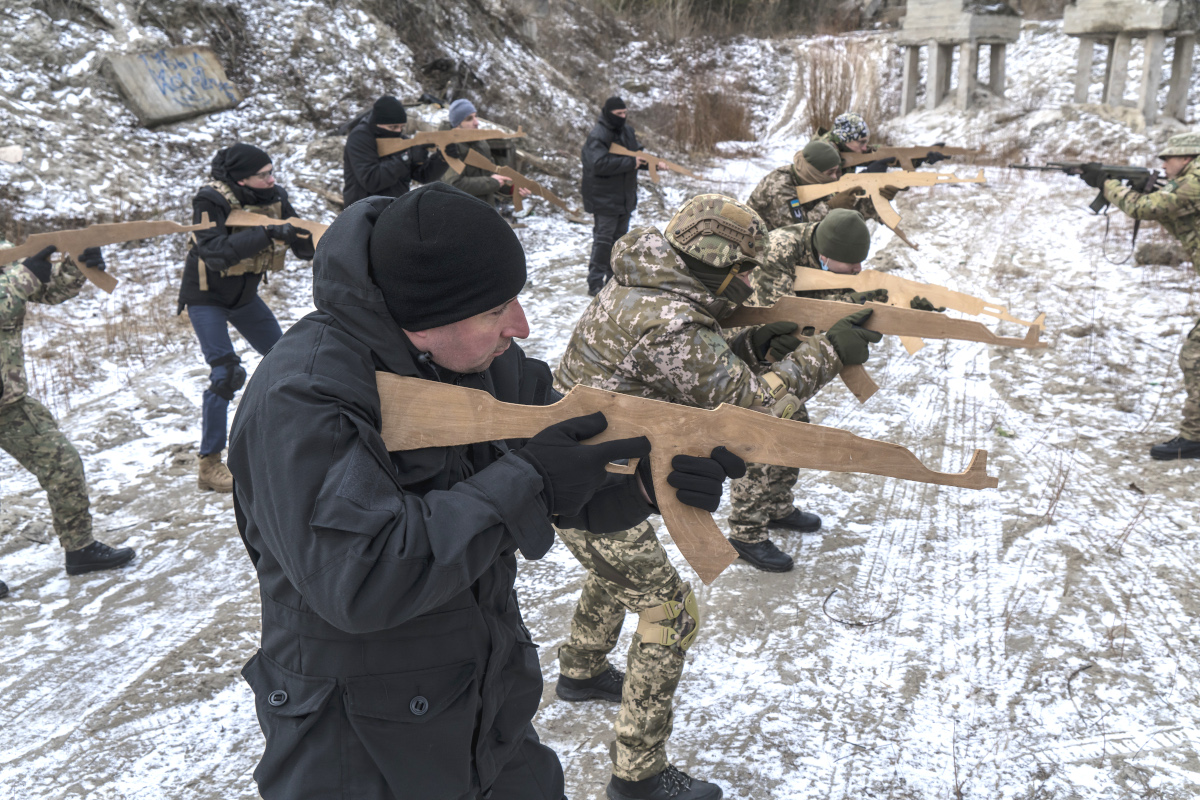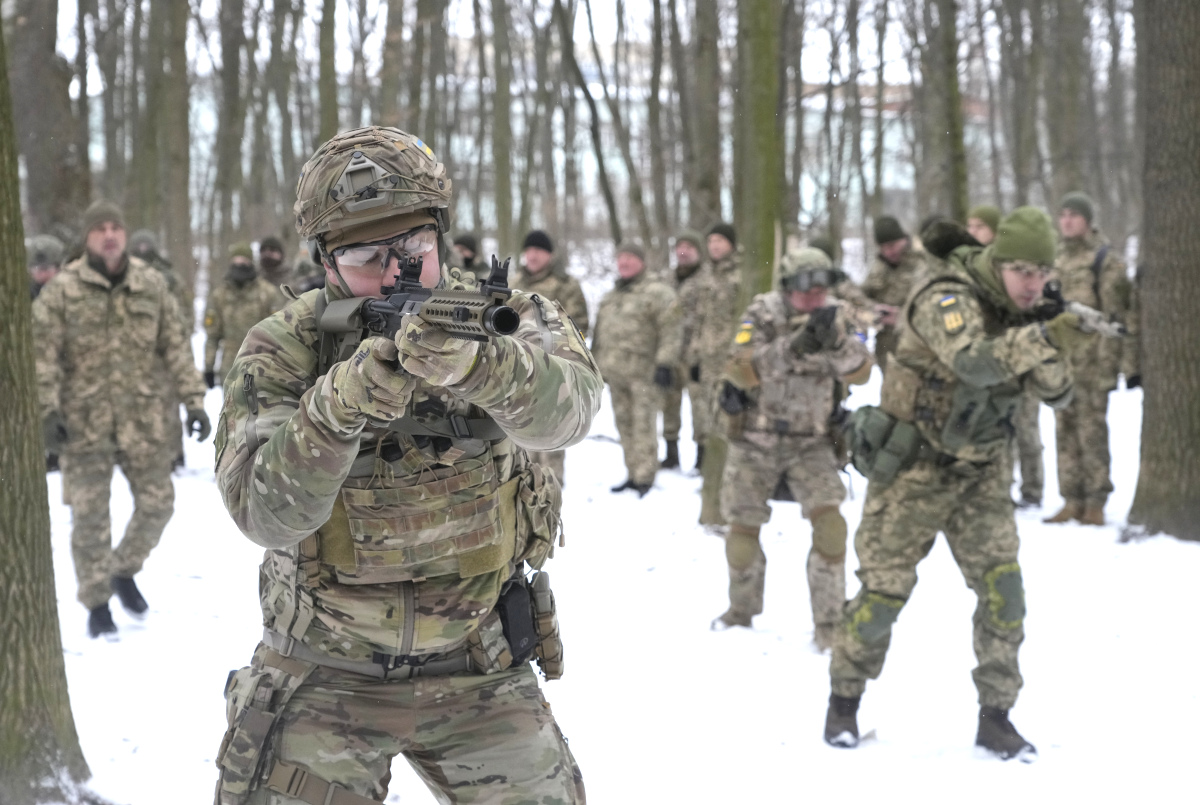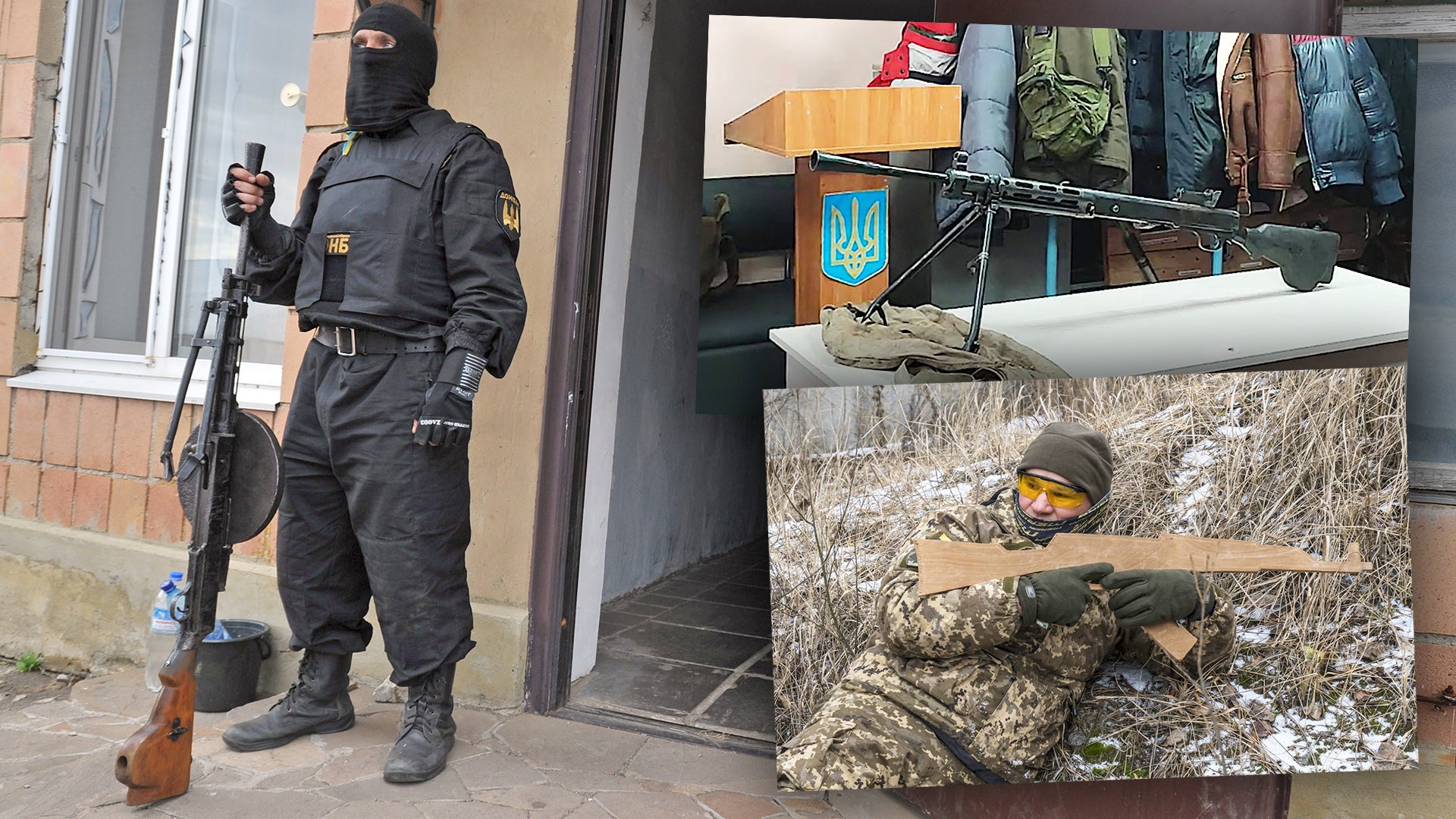A video has appeared online reportedly showing a volunteer instructing members of the Ukrainian Territorial Defense Forces, who often lack guns of any kind, on how to use and maintain a DP-27 light machine gun. This is a Soviet design that predates World War II. The possibility that some number of these weapons could be issued to local self-defense units underscores the full scope of Ukraine’s efforts to try to bolster its military capacity in the face of potential new large-sale Russian incursion into the country, as well as the limitations of these volunteer forces.
The video in question, seen below, which is nearly an hour and a half long and is unlisted, was posted on YouTube on Jan. 25, 2022. This course on the operation and maintenance of the DP-27 was reportedly put on for members of the Territorial Defense Forces battalion in Brovary, a city situated just outside of the Ukrainian capital Kyiv. The Brovary Territorial Defense Battalion is assigned to 114th Separate Territorial Defense Brigade, which controls various units in the general vicinity of Kyiv. At present, Ukraine’s Territorial Defense Forces consist of around 80,000 volunteers, in total, in units assigned to 25 separate brigades across the country.

“In my opinion, there are no old machine guns at all,” Ivan Savelyev, the volunteer instructor, says at one point about the DP-27, according to a machine translation. “And the main tactical and technical characteristic of any weapon is the head of its owner and what is invested in this head.”
Soviet small arms designer Vasily Degtyaryov led the development of the DP-27 in the late 1920s, with the gun, as its name implies, being formally accepted for trials in 1927. Operational units began receiving the first of these guns, which are chambered in the 7.62x54mmR cartridge, the following year.
The DP-27 is a relatively simple, if dated design that feeds from a top-mounted pan-shaped magazine holding 47 cartridges and has a rate of fire of around 550 rounds per minute. The guns proved to be generally reliable, even in very cold weather and other adverse conditions, and saw use with Soviet forces during conflicts with Finland in the lead up to World War II, as well as throughout that conflict. Vehicle and aircraft-mounted versions were subsequently developed, as was a belt-fed derivative, the RP-46. Thousands of DP-27 variants were exported around the world in the post-war period.

It is not immediately clear from the video whether any members of the Brovary Territorial Defense Battalion have actually been issued DP-27s or what specific plans there might be to distribute these weapons to individuals assigned to that unit in the future. What we do know is that it would not be unprecedented for the Ukrainian military, as well as volunteer self-defense units, to issue dated weapons like this and use them in actual combat.
At least one DP-27 was seen in the hands of a member of the Donbas Battalion, a pro-Ukrainian volunteer militia in the country’s eastern Donetsk region, in 2014. That year, Russian forces seized control of Ukraine’s Crimea region and subsequently began actively supporting ostensibly local ‘separatists’ fighting against the government in Kyiv. That conflict continues to this day.

Two years ago, a video emerged showing a Ukrainian soldier manning a position on the front lines in the country’s eastern Donbas region armed with an M1910 Maxim machine gun, a different weapon, which predates World War I. Separate footage from 2016 showed a different Maxim gun also in active Ukrainian service.

The continued use of guns like the DP-27 and M1910 in Ukraine is at least in part due to the ammunition they use. The first versions of the 7.62x54mmR round were produced at the end of the 19th century and it is the oldest basic cartridge design still in widespread use around the world, including in Russia. As long as these older machine guns remain functional, there is a ready supply of ammunition for them.
Beyond that, for Territorial Defense Forces, any functional machine guns could well be a welcome addition to unit arsenals. At least as of December, the Ukrainian military was not distributing guns from its own stocks to these volunteer units, many of which were conducting their once-a-week training drills with cardboard cutouts of guns rather than real ones.

Ukrainian authorities have authorized members of these units to use weapons they acquire themselves, but this can be a costly proposition and one would imagine that civilian arms dealers in Ukraine are not necessarily stocked up on things like light machine guns. So far, pictures of Ukrainian Territorial Defense units have shown individuals training with a variety of “assault” type rifles, including AK and AR-15/M16-pattern guns, bolt-action rifles, and pistols.



There seems to be little doubt about the sense of patriotism among the thousands of average Ukrainians who have now signed up to be members of the country’s Territorial Defense Forces. In December, Ukrainian authorities notably put out a military recruitment video, seen in the Tweet below, that highlighted the contributions of regular citizens to the country’s defense.
At the same time, the DP-27 training and the lack of weapons in general, among other things, can only call into question just how useful any of these units might be, even as localized guerilla forces, in the face of a new large-scale conventional Russian incursion. Ukrainian authorities have recently sought to downplay those concerns, but the U.S. government and a number of its allies continue to point to worrisome signs that the Kremlin is at least keeping the option of military action wide open.
“I have no idea whether he’s [Russian President Vladimir Putin] made the ultimate decision, but we certainly see every indication that he is going to use military force sometime perhaps [between] now and the middle of February,” U.S. Deputy Secretary of State Wendy Sherman said at the Yalta European Strategy forum today. She added that the U.S. government was still “pushing for diplomacy” to de-escalate the situation, but that American authorities were preparing responses to “all kinds of scenarios,” ranging from “full-on invasion” to “hybrid attacks or subversion or sabotage or coercion.”
All told, the situation continues to be highly fluid and how Ukraine’s volunteer Territorial Defense Forces battalions, armed in part with DP-27s or not, might be employed in the event of a new Russian military intervention remains to be seen.
Contact the author: joe@thedrive.com
